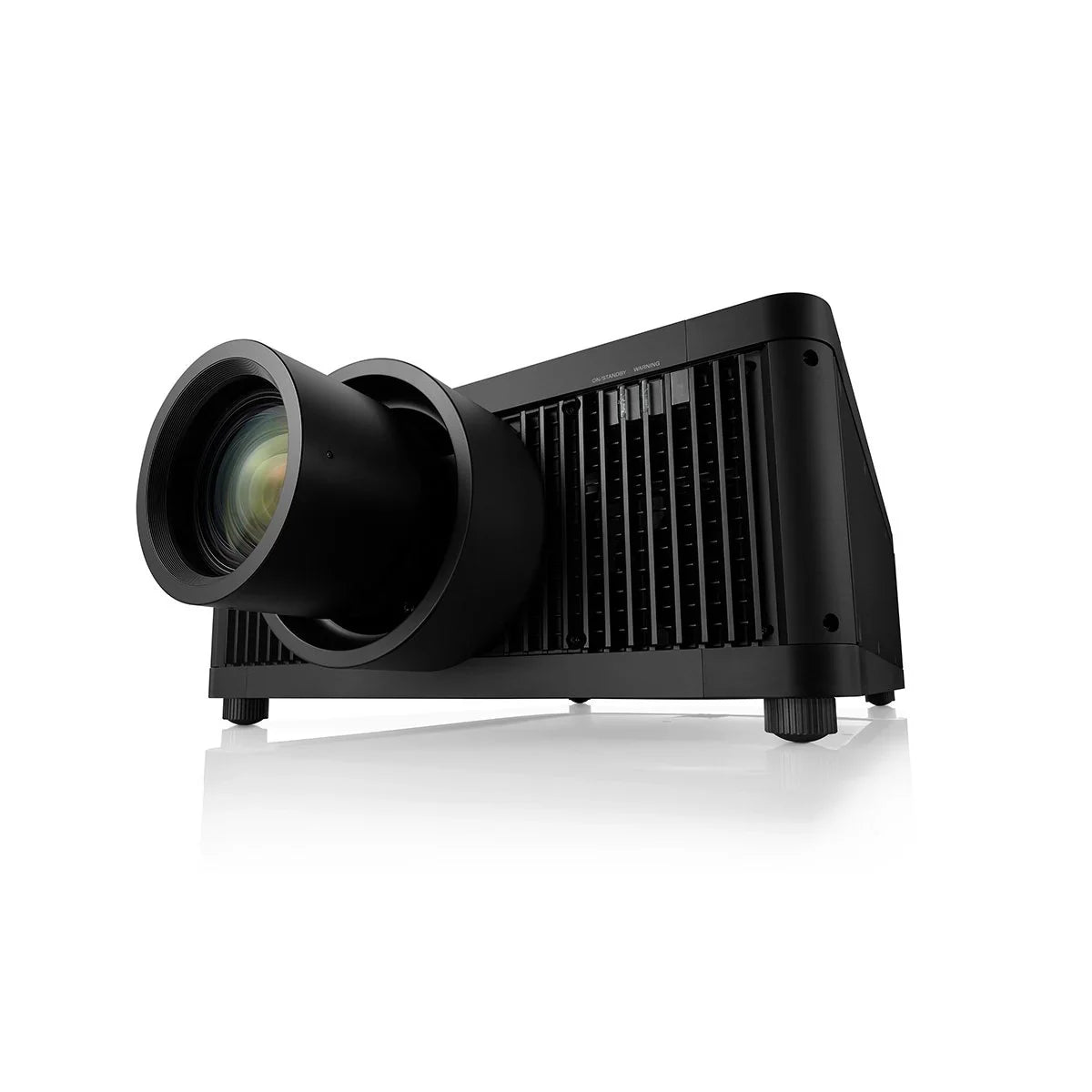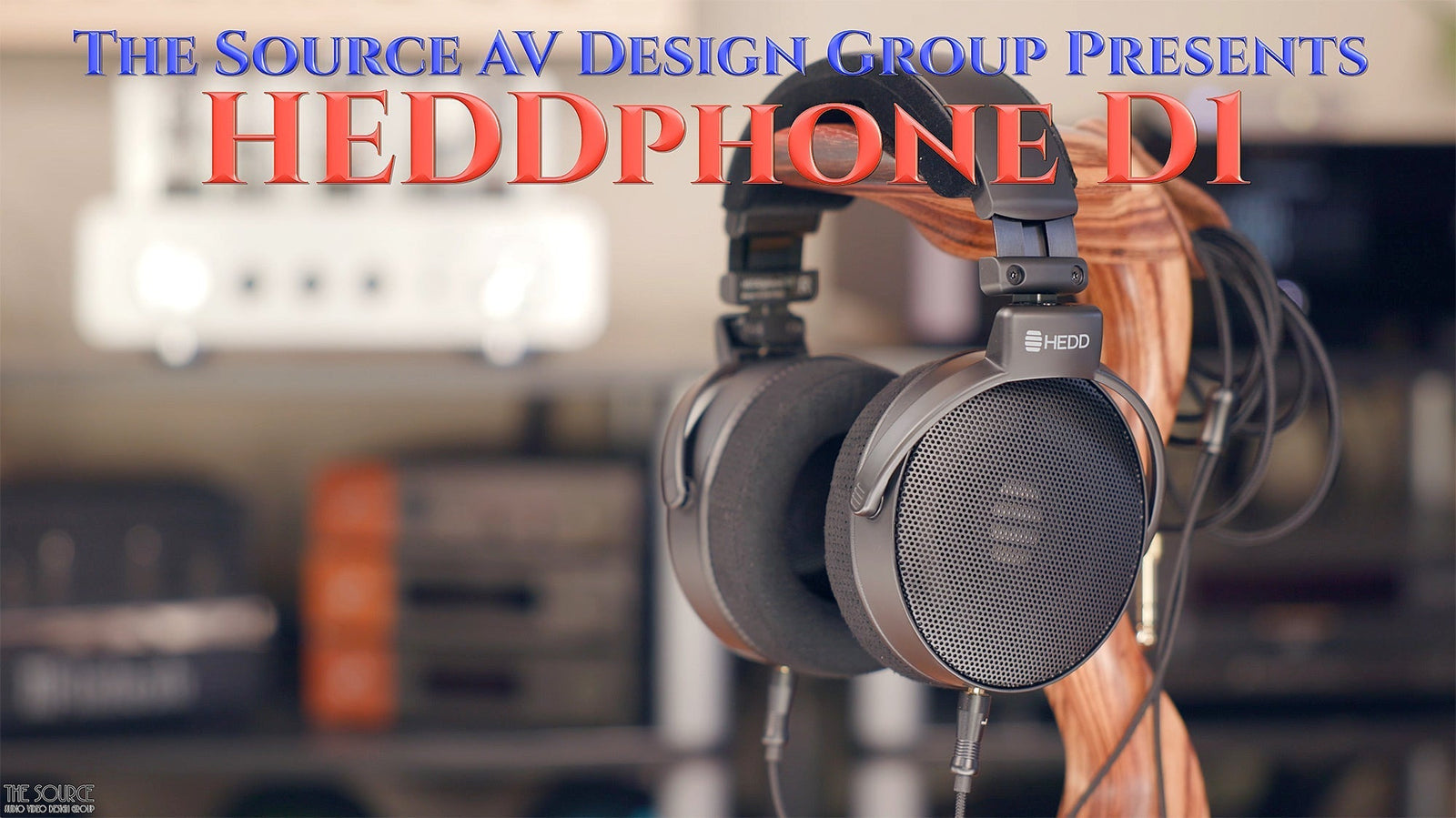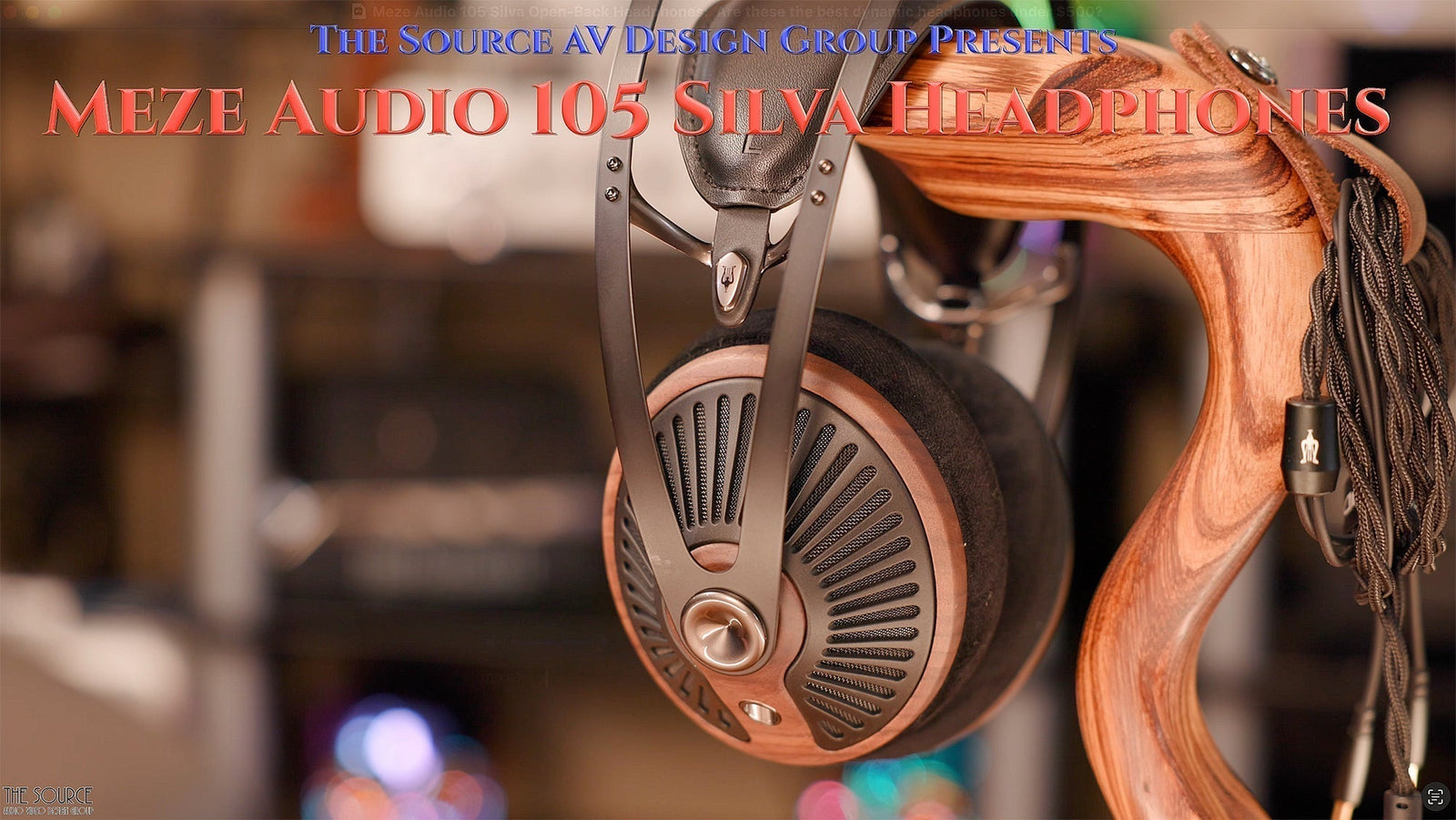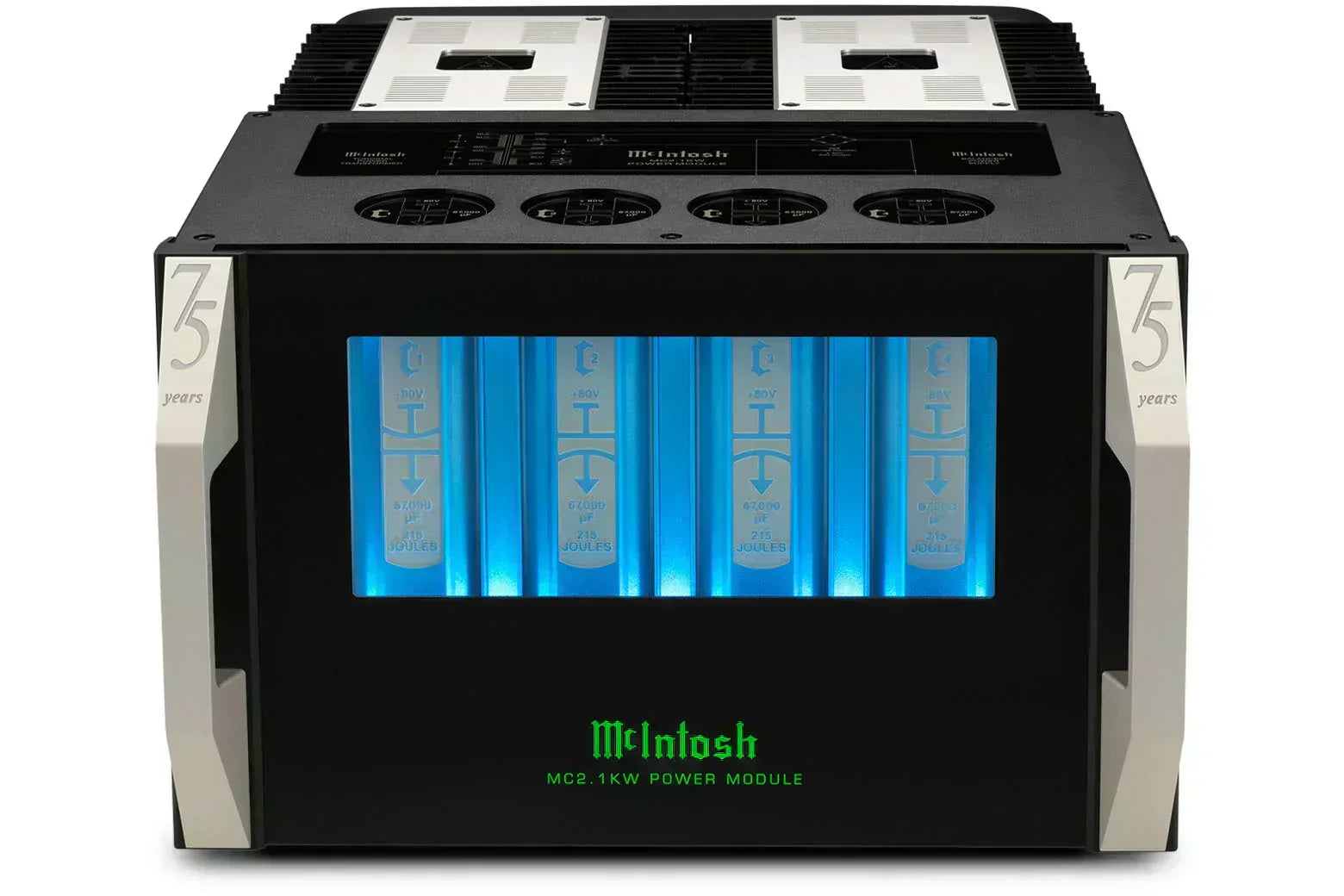At The Source AV, we cover home audio & video, personal audio, home theater, home automation and speak with some of the movers and shakers in the music and HiFi industry.
Today, I share my first impressions of the Marantz 40n Network Integrated Amplifier. This article will focus on the build quality, design, and some of my initial sound impressions about the 40n paired with my current reference speakers, the Sonus faber Olympica Nova V’s. In a future article, I’ll bring you a more detailed comparison of the Marantz Model 30 amplifier.
There is a lot to talk about with the 40n so let’s get down to business.
Hand-made in Japan, the 40n is a Class A/B power amplifier that delivers an honest 70 watts per channel into 8-ohm speakers and 100 watts per channel into 4-ohm speakers giving a listener numerous speaker options that can be paired with the 40n.
Weighing 36lbs using aluminum for the front center panel, side covers, and steel for the top surface, the Marantz 40n feels hefty and exceptionally well built. The front panel has beautiful edge lighting, a lovely visual design element.
The Marantz uses proprietary Hyper-Dynamic Amplifier Modules, otherwise known as HDAM, also found in its bigger brother, the Model 30. The 40n’s HDAM SA3 Power Amplifier Circuit utilizes a Double Shielded Toroidal Power Transformer that helps to give some deep well-controlled bass that we will talk about in the sound impressions section of the article.
The frequency response of the Marantz is 5hz-50khz with a THD of .02%. The DAC used by the 40n based on my research is an ES9016 chipset capable of PCM up to 24bit/192khz and DSD up to 5.6 megahertz. You can choose from two digital sound filters through the Setup button on the remote. According to Marantz, Filter 1 offers a short impulse response for pre-echo and post-echo, producing a large amount of audio information with precise reproduction of stereo imaging.

With Filter 2, Marantz uses an asymmetrical impulse response with the post echo hanging slightly longer than the pre-echo creating a more analog sound. Marantz has done an excellent job implementing the chipset, which I will detail when discussing my sound impressions.
The 40n utilizes HEOS for multiroom streaming with several music services such as Spotify, Tidal, Amazon Music Unlimited, Apple Music, Pandora, IHeart Radio, SiriusXM, and Deezer, to name a few. Unfortunately, no Qobuz at the time of writing this article and no Roon Ready status, although the 40n will show up as an airplay device through Roon. Most of my streaming impressions will be based using Tidal, Amazon Music Unlimited, and AirPlay 2 with Roon.
Not only is the 40n capable of streaming wirelessly with its two wireless antennas, but you also can directly plug into an ethernet port on the back of the integrated amplifier. In my experience, the wireless streaming performance was excellent; however, for the best quality and stability, I would use the ethernet port if possible. If you have your own digital music library, you are also capable of playing your collection via USB-A input or a compatible home server.
Another cool feature that I didn’t think I would end up using but most definitely do is the ability for the 40n through HEOS to work directly with Amazon Alexa. After setting up the Marantz through HEOS, which only took a couple of minutes, you can add the HEOS integration via the Alexa app and tell Alexa to play classical music in the name of the room your 40n is set up in. Like magic, the 40n starts playing a playlist of classical music.
You would be surprised how great a feature like this is when you get up at 5:30 in the morning, haven’t had coffee yet, and want some soft, uplifting music to start your day as you make some Espresso. The 40n also works with Hey Google and Siri.
For those of you who don’t have room for an entire surround sound system but want better sound than a basic big box store soundbar, the Marantz 40n has your back, allowing you to create a 2.1 system with a simple HDMI ARC input that can capture audio from your ARC compatible TV and connected gaming systems.
As far as the analog world of spinning vinyl, the 40n has an excellent Marantz Musical Phono EQ built-in, allowing you to connect your turntable with a magnetic moving cartridge directly to the Model 40n. I utilized my Marantz Reference TT-S15 table for my initial vinyl sound impressions.
For those of you with moving coil cartridges, you will need to look at the 40n’s bigger brother, the Model 30, which we will discuss more in the follow-up article.
Another great feature I enjoy about the 40n is the ability to adjust Bass and Treble directly on the front of the Marantz. When turning them, the controls have a very smooth tactile feel and are so simple to use even for a significant other in the house who may not be as technologically advanced as yourself.
I suspect that the entire amplifier’s build and design will likely have many significant others approving of its visually simple yet elegant design. It just works without getting buried in menu settings or the remote. This is a big plus in my book for beginner and seasoned audio enthusiasts alike.
I wish that the tone controls were capable of being controlled from the remote, so when you are sitting on your couch or chair listening, you could make changes based on your taste without getting up.
On the front of the amp, you have the power button, followed by the source direct knob, which, according to Marantz, allows the signal to bypass the tone control portion circuitry to allow for a higher quality of sound.
Next on the 40n, you have the bass tone control, treble tone control, balance, volume, and the ¼” headphone output which we will discuss more in the 30n comparison article. I love the feel of all the physical controls. They feel smooth to turn with just the right amount of resistance.
Above all the physical controls, the classic Marantz porthole display is easily seen from my listening position about 9ft away.
Lastly, as I mentioned earlier, the physical controls are surrounded by an elegantly designed faceplate gently illuminated by a dimmable backlight.
On the rear of the 40n, you have Bluetooth and Wifi Antennas, phono input, signal ground, USB, Ethernet, HDMI ARC, Coaxial, and Optical Digital inputs. You have CD, Line, and Recorder for additional inputs and those wanting to do your own recording.
You also have a Record out, a subwoofer out, a power amp in, remote control in and out to connect multiple Marantz components, and a set of well-made, durable speaker binding posts. The Subwoofer out allows you to set a low pass filter of 40hz, 60hz, the default of 80hz, 100hz, or 120 Hz, depending on your speakers.

The one thing I wish Marantz had done differently on the 40n would have been to include a preamplifier out instead of having a power amp in. However, I understand the power amp in feature and how it allows the 40n to partner up with a dedicated Home Theater AVR, so there is value in that input for the right users.
The included remote is of very high quality, with significant weight, and has an excellent button layout, taking its visual design cues from the 40n. Again, the only thing missing for me was the ability to adjust the tone controls from the remote.
Lastly, the 40n includes a 5-year warranty when the product is registered through Marantz and purchased from an authorized dealer.
My Sound Impressions
For my impressions, I utilized my reference Marantz TT-S15 turntable, the internal DAC portion of the 40n on filter one, and my Chord TT2 as the DAC on filter one to hear the differences between the two DACs.
Most music streaming was done via Amazon Music Unlimited and Tidal via the HEOS app and through ROON with Tidal and Qobuz via Airplay and when fed directly by the TT2. As I mentioned earlier, the speakers used for my impressions are the Sonus Faber Olympica Nova V’s. I utilized high-quality Clarus speaker cables, power conditioners, and a high-current power cord for the 40n.
The Marantz 40n has what I would characterize as a warmer-than-neutral yet detailed sound quality. This is an amp I could listen to for hours on end without ever being afraid of any listening fatigue. The amp is dynamic, showing some muscle and hard-hitting punch if the recording calls for it. The included in-house designed Marantz Musical Phono EQ is not an afterthought and sounds superb with my Marantz turntable.
Let me get this out of the way; I thoroughly enjoy the sound of the 40n at its asking price. I enjoyed it so much that I purchased it.
Let’s break it down and talk about some of the critical areas of sound.
Bass on the Model 40n is pretty tight and well-controlled, fleshing out the excellent sound of the six woofers of the Nova V’s. Listening to bass, heavier pop music from The Weekend, such as hisBlinding Lights track, is very impressive. Mezzanine is another favorite of mine from Massive Attack, the track “Angel,” this time turning off direct mode and giving a twist to the bass tone control, and I am met with a very tasteful increase in the volume of the bass.
For Hip Hop or Electronic music lovers who listen to heavy bass tracks, you can adjust the tone control to layer on more bass to taste plus or minus 10db in the 50hz region. Or you could always do what I did and get yourself a pair of stereo subs from REL, which, in my opinion, gives superb bass reproduction in the lower frequencies as well as improves the soundstage.
Listening to Yo-Yo ma and theSix Evolutions album, I found the Cello across this album to sound rich, with superb timber and glorious texture. Another good example is listening to the Double Bass played by Nick Blacka on the GoGo PenguinsLive From Studio 2 album. The 40n is not bass shy, and I was delighted with how well it performs with the Novas.
Moving to the midrange, there is a sweetness in the sound of the 40n’s midrange, never coming across as too forward or harsh. Strings and piano keys that fall in the midrange have a beautiful presence and glow that is so enjoyable to listen to. There is still plenty of attack for percussive and rhythm instruments while keeping vocals sounding rich and inviting when listening to Melody Gardot Live in Europe or Lianne La Havas on vinyl and streaming.
Listening to the Grateful Dead’sAmerican Beauty Record and the song “Ripple,” I am met with superb texture, timbre, and just the right amount of bite and energy from the strings on this track. Jerry, Bob, Phil, and Pigpen’s vocals have a delicate and charming quality, with more warmth than other amplifiers in the house, which I enjoy. The midrange of the 40n is just excellent for my listening preferences.
Treble from the 40n is presented tastefully without sounding harsh or bright with the Novas. Listening to “The Son of Flynn” from Daftpunk working with the London Orchestra on the TRON Legacy Soundtrack, the synths never come across with glare as they can on some amps and DACs on this track.
Listening to “Wakanda” off the Black Panther soundtrack, with some system pairings when the horns begin, they can make me cringe. I am happy to report the 40n paired with the Nova’s sounded great without sounding harsh and still having an excellent attack in the treble region.
Listening to Portishead’s “Humming,” the vinyl surface noise, hi-hat, and Beth’s vocals, which on the wrong setup will sound sibilant, are well managed by the Nova V and 40n pairing. Listening lastly to Lindsey Sterling’s Underground off herARTEMIS record, the Violin has excellent speed, clarity, and definition again without sounding harsh or deafening. Like the bass tone control, you can also adjust the level of treble plus or minus 10db with the treble tone control, however only in the 15 kHz region.
Soundstage and imaging from the 40n are precise with excellent imaging. The soundstage width isn’t incredibly vast, traveling slightly outside the Sonus faber. The forward travel of the sound stage imaging is in line with the speakers; however, there is a decent depth of the soundstage behind the speakers and my component racks.

Listening to Kitaro’s “Kojiki” album is excellent for examining sound stage size, depth, and imaging. I also listened to Money for Nothing from Dire Straits, the entire Brothers in Arms and Communique records, Pink Floyd'sDark Side of the Moon, and lastly, Eldorado fromElectric Light Orchestra. At this price, I am pleased with the sound stage for an all-in-one unit, even if it is not the widest or deepest I have heard in my listening room.
The Marantz 40n is a reasonably fast amp that easily keeps up with busy passages on complex recordings. It packs a good punch, allowing music to sound dynamic and engaging when paired with the Nova V’s. Fast-paced electronic music, Rock, and Pop are delightful to listen to due to the 40n’s fast, punchy quality of sound. It will be interesting to see which amplifier has more speed and dynamics vs. the Model 30 integrated amplifier.
Detail presentation and overall resolution of the 40n is excellent at this price, which is listed on ourwebsite.
I would say the ability of this Integrated amplifier to resolve details, both micro and macro, is slightly held back by the internal DAC. When running the Chord Hugo TT2 into the 40n, I am immediately struck by how much more macro and micro details can be heard across all the tracks I listened to while creating this article.
The differences in sound when running the Chord TT2 as the DAC are more than subtle, with an increased width, depth, and three-dimensionality to the soundstage and more clearly defined imaging. The sound with the TT2 also creates a more analytical listen with less overall quantity of bass energy and dynamic punch to the music. The TT2 allows for more resolution and takes a microscope to recordings for better or worse.
I am very curious to hear how the Model 30n would pair with the 40n as well as the Model 30 as the 30n Super Audio CD player, Streaming, and Digital Analog Converter uses a custom in house design that upscales all PCM to DSD and uses their own Digital Signal Processing for the sound filters.
To conclude my thoughts on the Marantz 40n, I am a huge fan!
The 40n offers a ton of value for beginners and experienced audio enthusiasts alike. It has enough power and current delivery to drive most bookshelf and floor-standing speakers, depending on their efficiency. It has an engaging unfatiguing sound that I can listen to for hours.
The included Phono sounds terrific with my Marantz table and Clear Audio Virtuoso cartridge making vinyl playback sound elegant and rich.
The aesthetics are beautiful, simple, yet elegant, with superb visual symmetry. The Heos App in my use works excellent with Tidal and Amazon Music Unlimited, as does Roon through AirPlay. I struggle to find much I would like more from the 40n at its current price.
However, if I were going to ask for a few things, I would have liked to see a preamplifier out, and I would like to see Roon Ready status added, which Marantz is currently working on, including the ability to stream Qobuz and MQA with Tidal.
All of us from TSAV hope you enjoyed this article of my experiences with the Marantz 40n Integrated Network Streaming Amplifier, and the information we shared helps you determine if it might be a good fit for you.
Until next time friends, always remember, let the music be your guide!






Leave a comment (all fields required)